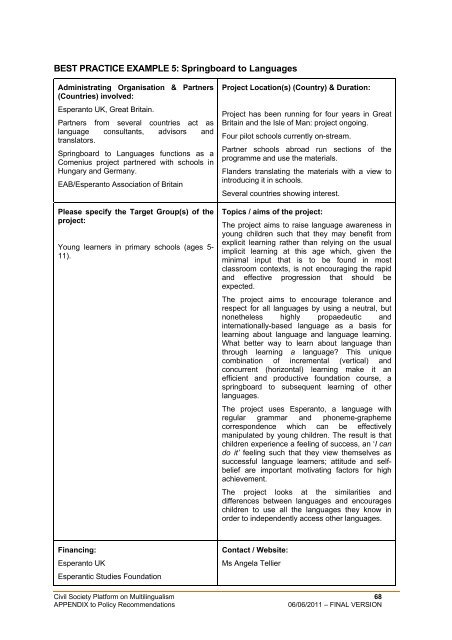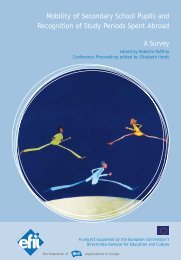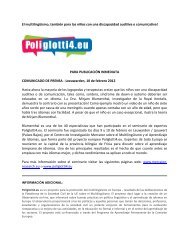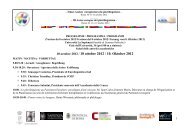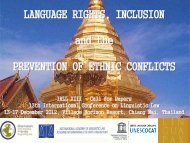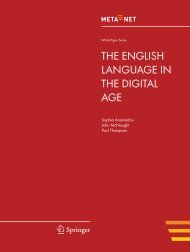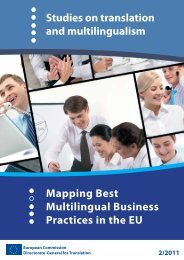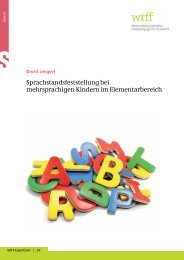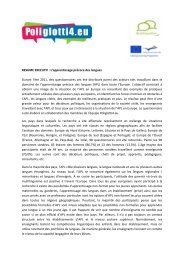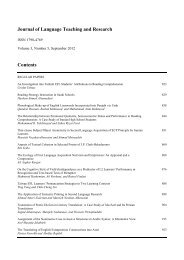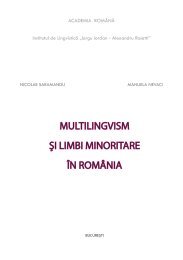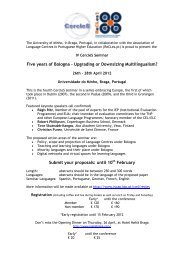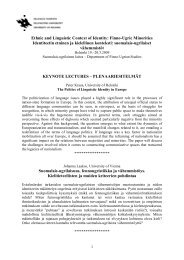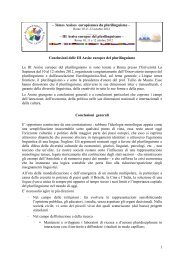FULL VERSION - European Commission - Europa
FULL VERSION - European Commission - Europa
FULL VERSION - European Commission - Europa
Create successful ePaper yourself
Turn your PDF publications into a flip-book with our unique Google optimized e-Paper software.
BEST PRACTICE EXAMPLE 5: Springboard to LanguagesAdministrating Organisation & Partners(Countries) involved:Esperanto UK, Great Britain.Partners from several countries act aslanguage consultants, advisors andtranslators.Springboard to Languages functions as aComenius project partnered with schools inHungary and Germany.EAB/Esperanto Association of BritainPlease specify the Target Group(s) of theproject:Young learners in primary schools (ages 5-11).Project Location(s) (Country) & Duration:Project has been running for four years in GreatBritain and the Isle of Man: project ongoing.Four pilot schools currently on-stream.Partner schools abroad run sections of theprogramme and use the materials.Flanders translating the materials with a view tointroducing it in schools.Several countries showing interest.Topics / aims of the project:The project aims to raise language awareness inyoung children such that they may benefit fromexplicit learning rather than relying on the usualimplicit learning at this age which, given theminimal input that is to be found in mostclassroom contexts, is not encouraging the rapidand effective progression that should beexpected.The project aims to encourage tolerance andrespect for all languages by using a neutral, butnonetheless highly propaedeutic andinternationally-based language as a basis forlearning about language and language learning.What better way to learn about language thanthrough learning a language? This uniquecombination of incremental (vertical) andconcurrent (horizontal) learning make it anefficient and productive foundation course, aspringboard to subsequent learning of otherlanguages.The project uses Esperanto, a language withregular grammar and phoneme-graphemecorrespondence which can be effectivelymanipulated by young children. The result is thatchildren experience a feeling of success, an ‘I cando it’ feeling such that they view themselves assuccessful language learners; attitude and selfbeliefare important motivating factors for highachievement.The project looks at the similarities anddifferences between languages and encourageschildren to use all the languages they know inorder to independently access other languages.Financing:Esperanto UKEsperantic Studies FoundationContact / Website:Ms Angela TellierCivil Society Platform on Multilingualism 68APPENDIX to Policy Recommendations06/06/2011 – FINAL <strong>VERSION</strong>


